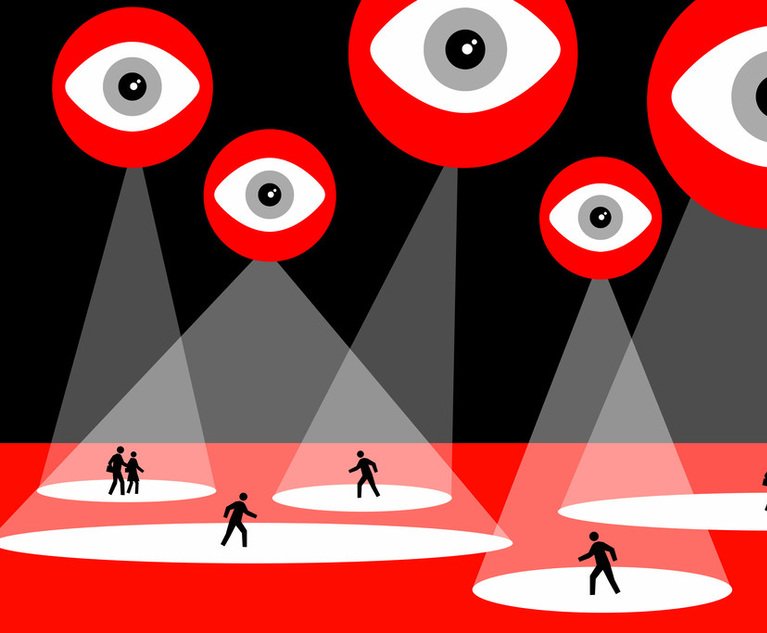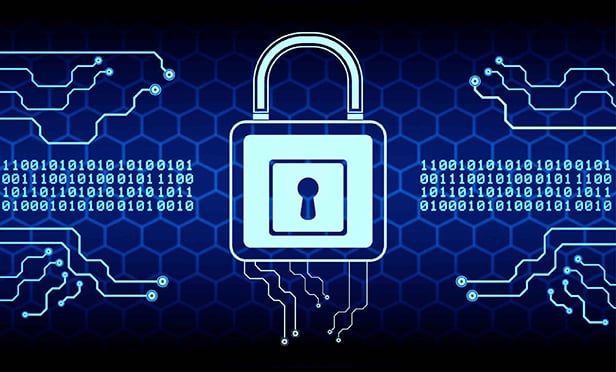
In the fall of 2017, the #MeToo movement took off, bringingattention—and notoriety—to the widespread problem of sexualharassment and assault in the workplace. As a result of this andsimilar social accountability movements, employment practiceliability insurance (EPLI) and directors and officers (D&O)insurance are more needed and sought after than ever before.
|Although initial allegations posted in social media focused onthe entertainment industry, sexual misconduct on the part of thosein positions of power has occurred across businesses andorganizations in the private and public sector alike. U.S. EqualEmployment Opportunity Commission (EEOC) data reveal that there wasa more than 50 percent increase in suits challenging sexualharassment in fiscal year 2018 over 2017. Overall, the EEOCrecovered nearly $70 million for sexual-harassment victims throughlitigation and administrative enforcement in FY2018, up from $47.5million in FY2017.
|“For private and nonprofit companies, the wrongful employmentpractices that currently hold the highest claim frequencies aresexual harassment, wage-and-hour, and third-party/ADA violations,”says Heather Schaaf, underwriting director for Management Liabilityat Burns & Wilcox. She notes that for publicly tradedcompanies, sexual harassment and pregnancy discrimination are theleaders in claim severity, as they can be high-profile cases underpublic scrutiny.
|Schaaf attributes differences among EPLI claims for private vs.public vs. nonprofit risks to the type of employees that who workfor those organizations, along with the class of business.According to Schaaf:
- Public companies may be more likely to have class-action suitsdue to their size.
- Nonprofits are more likely to have claims due to a lack ofsophisticated human resource practices.
- Private companies experience differing claims from differingclasses of workers. For example, while employees in finance or laware high earners, farm labor contractors are more likely to filewage-and-hour claims.
She points out that it is important to note not only the typesof allegations but also the classes of business, corporatestructure, and venue where these claims are being litigated.
|John Grise, senior vice president at Worldwide Facilities LLC,observes that the EPLI market is experiencing a wide variety ofsexual harassment and discrimination cases. “We are also seeing aslight uptick in immigration claims and a significant amount ofwage-and-hour claims, which have become a prevalent cause of loss,”he says.
|As far as retention and premiums in EP/D&O insurance go,Schaaf has seen increases for both retention and premiumdevelopments, along with a tightening of coverage offered amongcarriers. She believes carriers are responding to an uptick inclaims frequency and severity by increasing per-claim retention andoverall policy premiums. In response to claims that the coveragewas not originally intended for, they are strengthening policylanguage as well.
|“D&O policy language varies from carrier to carrier, marketsegment to market segment, and company to company,” says RobYellen, D&O and fiduciary liability insurance product leader atWillis Towers Watson. As a result, sorting through the implicationsof potentially related claims under claims-made insurance coveragehas always been challenging.
|“A company's policy wording can even change from year to year,whether by endorsement or when a new policy form is introduced bythe insurer,” he notes. “Even if the wording appears clear, thequestion of whether two or more claims relate is often a factualone. In applying facts to related-claims wording, it can sometimesseem that there is room for so many interpretations—at least onefor every agenda among stakeholders.”
||
#MeToo and the D&O Market
Across the board, insurance professionals agree that #MeToo issuesare having a strong effect on the D&O liability insuranceworld. The practitioners we spoke with reported increasedsexual harassment claims, along with a handful of “reverse” sexualharassment claims—that is, when the alleged harasser is female andthe victim is male. Kelly Thoerig, U.S. EPLI product leader atMarsh, notes that this type of claim appears to have actuallyincreased post–#MeToo, probably due to sexual harassment claimsactivity surging across the board. No one we spoke to, however,reported seeing more same-sex claims.
|Grise says that the #MeToo movement has not necessarilyincreased exposure to sexual harassment, given that sexualharassment has been a longstanding issue in the workplace. However,the movement has certainly brought about a heightened awareness andlack of tolerance for misconduct in the workplace, on the part ofwomen and men alike. “The major impact regarding #MeToo is stillfocused on the EPLI coverage part contained in both the privatecompany and nonprofit D&O markets,” he says.
|Yellen points out that the effectiveness of #MeToo and othermovements has proven the concept that individuals and companies canbe held accountable through “structured and unstructured” campaignspowered by social media. These social-media campaigns “can getresults and do so much more swiftly than the courts. Litigation, onthe other hand, can cost millions and take years to get a result.No doubt about it, social accountability has changed the face ofD&O risk forever,” he says.
|For public companies, Yellen observes, social accountability hasthe power to take historically minor events and elevate them tobecome financially material within a matter of hours. “That's agame changer. We have seen securities class actions, derivativeclaims, executive terminations, and regulatory enforcement andinvestigations all result from a social accountabilitycrisis—including those that have been associated with #MeToo. So,from a D&O liability perspective, this exposure can really makea difference.”
|Within the last two years, Burns & Wilcox has seen asignificant rise in claims tied to the #MeToo movement, and tomergers and acquisitions, among other trends. “Mergers andacquisitions and management decisions in the healthcare arena, forexample, are leading to an increase in antitrust and whistleblowerclaims,” says Schaaf. Because of heightened awareness of theseissues, she expects to see more carriers providing solutions thatoffer broader language and definitions that give clients awell-rounded risk-management strategy.
|According to Sarah Downey, U.S. D&O product leader at Marsh,the increase in litigation arising out of the #MeToo movementincludes D&O-related claims such as securities class actionsand derivative actions. Furthermore, she points out,corporate-focused claims are exposing companies to enormous costs,including drops in market capitalization and legal expenses forinternal investigations, government proceedings, employmentlawsuits, securities class actions, and shareholder derivativesuits.
|In response to the increase in D&O-related #MeToo filings,the D&O underwriting community is taking steps such asincluding EPLI-related questions in D&O underwriting meetingsto assess the “tone at the top” regarding the culture of enforcinganti-harassment policies. “In general, because (in part) of theincrease in litigation that includes the increase inD&O-related #MeToo litigation, we are no longer seeing the sameprice decreases in the D&O market that we have grown accustomedto seeing, with D&O pricing flattening out or increasing,”Downey notes.
|Combined with other adverse loss trends, social accountabilityissues are putting profitability pressure on carriers and driving afirming market, Yellen believes that improved coverage is likely tocome with a higher price tag this year. “The concern for D&Oinsurance is more than merely increased frequency of claims or lossseverity,” he says. The challenge of social accountability canextend to problems with the mechanics of the claims-made andreported insuring agreements that provide the foundation for somany of today's D&O insurance policies.”
||
Complex Health-Related Claims
Other increased EPL/D&O claims center on disability andhealth issues. For example, Marsh has noticed an uptick indisability discrimination claims premised on employee use ofmedical marijuana. “The trend of states legalizing recreationaland/or medical marijuana at a time of growing normalization ofattitudes toward marijuana use in general has left employers withsignificant challenges in navigating the ever-evolving attendantworkplace issues,” Thoerig says.
|She explains that employers must grapple with navigatingdisability, accommodation, drug testing, and workplace safetyissues—to name just a few—in the absence of legislative or courtguidance. Employers must also balance compliance with these complexlaws with their duty to establish a safe and productive workplace.“New and proposed laws legalizing recreational and medicalmarijuana are sure to affect hiring, discipline, and firingdecisions in novel and important ways, and this is an issue weencourage our clients to continue to watch closely,” shestresses.
|There has also been no slowdown in Americans with DisabilitiesAct (ADA) claims over websites, Thoerig adds. A “floodgate oflitigation” alleges discrimination against the hearing- andvision-impaired due to alleged lack of accessibility of a company'spublic-facing website.
|“Website ADA claims now make up a significant proportion of allADA lawsuit filings,” she says. And plaintiff theories of liabilityhave moved beyond just websites to mobile apps and self-servicekiosks. “EPLI policies that provide third-party liability coveragewill typically provide at least defense expense coverage for theseclaims. The costs incurred to bring a property (whether physical ornot) into compliance, however, is generally not an insurable loss.As the claims continue to evolve, and more plaintiffs choose topursue litigation, insureds have seen total loss amounts in excessof policy retentions,” Thoerig says.
|Another health-related area that continues to generatediscrimination claims is pregnancy. Thoerig says pregnancydiscrimination claims are not making up a significant portion ofthe discrimination claims that Marsh is seeing, but the numbersappear to have remained relatively constant over the last fewyears.
|Grise notes that given the need for workplaces to obtain andretain talent, Worldwide Facilities has seen increased flexibilityon the part of employers to accommodate employees with maternityand paternity leave. “Although companies are trying to mitigatethis type of claim, they still happen,” he says.
|Case in point: Shortly after acompany was told that an administrative assistant (paid well abovemarket rates) was pregnant with complications, it hired anotherassistant and had the pregnant claimant train her. After theclaimant trained the new employee, the company fired the claimant.The claimant alleged that her employment was wrongfully terminatedbased on disability and pregnancy discrimination. She was leftwithout insurance for her pregnancy and could not find a job thatpaid anywhere near what her former employer paid her. Thesettlement and defense approached $1 million, Grise says.
||
Increase in Age Claims
People are living longer today than ever before. “According todata compiled by the Social Security Administration, today a manreaching the age of 65 can expect to live (on average) until age84.3, and a woman reaching the age of 65 can expect to live (onaverage) until 86.6,” says Talene Carter, employment practicesliability thought and product leader at Willis Towers Watson.
|Grise points out that the tail end of the baby boomergeneration—roughly 10,000 people—reach retirement age each day. Andmany of them are delaying retirement. According to the Bureau ofLabor Statistics, older workers are the fastest growing segment ofthe workforce. In fact, 20 percent of US workers today are 55 orolder; by 2024, that will grow to 25 percent.
|With growing numbers of older workers come more agediscrimination claims. It's not surprising, then, when Grise notesthat the percentage of age discrimination claims filed byindividuals 65 and older doubled from 1990 to 2017.
|Case in point: A 65-year-oldaccountant alleged that her employment was wrongfully terminatedbased on age discrimination. When she was fired, the company paidher six months' severance but did not have her sign a release. Shelater filed suit, alleging that her wrongful termination based onpoor performance was a pretext for age discrimination because hersupervisor repeatedly made age-related comments in regard to howshe worked; in addition, she had never received a poor review. Thesettlement and defense exceeded $75,000, Grise reports.
|According to Thoerig, recent age discrimination cases she hasobserved are often presented in connection with a claim allegingdiscrimination based on another protected class, such as race ornational origin.
|Despite the increase in the number of aging directors andofficers, insurers are not reporting an increase in claims on thebasis of mental capacity—for example, because an officer ordirector is showing signs of dementia or Alzheimer's disease.
||
Religious, Ethnic Claims Vary
Thoerig says that religious discrimination claims make up a verysmall percentage of overall EPLI claims. “Not to diminish theimportance of guarding against these and all other claims premisedon some form of discrimination, religious discrimination claims donot seem to have been particularly problematic for our client baseor the EPLI markets that we work with.”
|On the other hand, Grise finds religious or ethnicdiscrimination claims “are plentiful and happen more frequentlythan many other types of discrimination.”
|Case in Point: A claimant allegedthat she was not hired as a teacher based on religiousdiscrimination. After the claimant was not offered the job, shefound out that the school thought she was qualified yet refused tohire her because of her Mormon faith and the fear that she mightimpart her beliefs to the children. The defense and indemnityexceeded $40,000, Grise reports.
||
D&O Claims: Costly and Complex
Social accountability movements—with viral content posted onsocial media flagging alleged conduct that potentially spans yearsor decades—create tremendous challenges in sorting through D&Ocoverage issues. As a result, some claims may be enormously complexand potentially unsolvable, cautions Yellen. “The recent,high-profile executive conduct scandals, particularly those in theentertainment and hospitality industries, have imbued thisrelated-claim challenge with new life. With decades-old alleged badbehavior (some tied to complaints, escalation, and sometimessettlements) coming to light, the D&O insurance industry has towrestle with the possibility that, in the court of public opinion,there is no statute of limitations.”
|The risk profile changes when claims that were formerly thoughtto be “resting peacefully” are escalated as alleged victims sharetheir experiences through social media. Potential implicationsbecome considerably worse and more complex, Yellen says. Thosedisclosures motivate others to share their experiences, causing theprocess to gather both energy and speed as other claimants layeron. “Each such victim potentially has or had a claim, and any orall of those claims may be related,” he says. “As more claimantsspeak up, the challenge of sorting through potential issuesworsens.”
|This risk is even more challenging for public companies, as thisprocess can heighten the financial exposure.
|Questions over claim timing, notice, and the relationshipbetween claims under traditional claims-made D&O insurancecoverage can leave even the most well-insured executives wonderingwhich, if any, of their D&O insurance policies will protectthem. “No insured wants to have to worry that they might have tofund their own defense as this coverage Gordian Knot is solved,”Yellen concludes.
||
D&O Liability and Cyber Risk
More and more insurers are recognizing that D&O liabilityinsurance coverage needs to address cybersecurity and data breachissues.
|“Overall, cyber risk is starting to be seen as a fundamentalpart of an entity and also the responsibility of an officer,”observes Schaaf. She points out that the European Union's General Data Protection Regulation (GDPR)introduced the new role of the “global protection officer.” Inresponse, companies are starting to adopt this position as a keyrole in their organization. “This initiative should lead companiesto define the position and ensure that their officer meets thedefinition of a director in their policy,” Schaaf says.
|Data breach events can be debilitating to a company, and itsresponse to a cybersecurity event is crucial. “While a company canhave a separate cyber policy to cover the event itself, D&Ocoverage can also be pulled in as support for large-scale breachevents,” she says. The dangers are great if a breach is not managedproperly or notice to the public is delayed, and can include suchmajor issues as a drop in stock prices and security shareholderlitigation. “For situations like these, breach of duty is the rootcause—not the cyber event itself—and D&O coverage can be theprotective solution.”
||
Reputational Harm: The Elephant in theRoom
Social accountability movements such as #MeToo have sparked aheightened need for directors and officers to ensure that theirmanagement and operations teams behave appropriately. With thiscomes “a requirement for boards to respond more immediately andswiftly in taking action to help prevent reputational harm to theorganization,” stresses John Grise, senior vice president atWorldwide Facilities, LLC.
|This harm can be far-reaching. As Yellen explains, ”#MeTooissues are significantly affecting D&O risk and insuranceacross social media, which has empowered individuals and the massesto find their voices like never before. In addition, people arelistening like never before. When unhappy voices can be heard byreceptive ears, the impact can be much more powerful thancomplaints, regulatory enforcement, or litigation. Socialaccountability, in today's social media–fueled environment, canhave a material impact in hours—maybe faster. Stock prices can fallhard and directors' and officers' reputations and jobs can be putin jeopardy.”
|Schaaf warns that the risk of reputational harm isn't beingtalked about enough when it comes to D&O liability.“Reputational harm is a growing issue for companies and iscurrently seen as a gap in some policies. A company's response to amajor event is known to have a lasting effect on how the publicperceives them.”
|To help maintain its reputation after a negative event, Schaafrecommends that an organization seek outside assistance to manageits response. A well-rounded D&O policy includes such coverageas a social media sub-limit, crisis event management, employmentevent expenses, and sub-limits to hire PR firms to help regulatefirm events. “D&O insureds not only need to be worried abouttheir personal assets when looking at their insurance coverage, butthey also should be exploring additional coverage options toprotect their company and themselves from reputational harm,”Schaaf stresses.
||
From: PropertyCasualty360
Complete your profile to continue reading and get FREE access to Treasury & Risk, part of your ALM digital membership.
Your access to unlimited Treasury & Risk content isn’t changing.
Once you are an ALM digital member, you’ll receive:
- Critical Treasury & Risk information including in-depth analysis of treasury and finance best practices, case studies with corporate innovators, informative newsletters, educational webcasts and videos, and resources from industry leaders.
- Exclusive discounts on ALM and Treasury & Risk events.
- Access to other award-winning ALM websites including PropertyCasualty360.com and Law.com.
*May exclude premium content
Already have an account? Sign In
© 2024 ALM Global, LLC, All Rights Reserved. Request academic re-use from www.copyright.com. All other uses, submit a request to [email protected]. For more information visit Asset & Logo Licensing.







